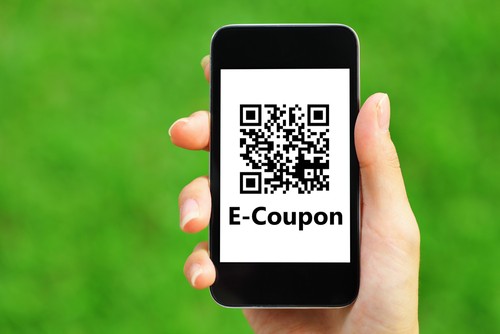Mobile Coupon Predictions: Coming To Grips With What Is Unknowable

Executives always want to know where a particular trend—especially a payment type—will be many years in the future. But it takes a steel-willed employee to push back, pointing out that the number of variables are so many that any projection beyond 2-3 years is utterly meaningless and entirely unreliable. Alas, many crunch and project away anyway, comforted by the knowledge that they will likely be long gone by the time Father Time has proven the predictions wrong. That brings us to a recent report on mobile coupons.
The report, courtesy of Juniper Research, argues that the number of unique mobile users redeeming mobile coupons will hit 559 million this year and will then climb to 1.06 billion by the end of 2019. In reviewing Juniper’s research, found no mathematical errors or flawed statistical assumptions. The flaw was in a more basic assumption, namely that the huge number of unknowns is in any way projectable.
Let’s start with the basics. What is a mobile coupon? What attributes does it have? If someone is being asked to answer that question about the typical mobile coupons used today, it can be done. But how will that definition change by December 2019, which is more than five years from now? Think back to what we all knew—and assumed and guessed—about mobile payments in 2009. How close were those guesses? That was barely two years after the first iPhone was introduced. That was the year 7-Eleven did a mobile coupon trial and collected E-mail addresses from everyone without asking age, a blunder that forced them to be unable to use all of that data because some might belong to minors. That was two years after Sears became the first major U.S. retailer to embrace barcodes. And 2009 is when Google mailed 200,000 barcode stickers to businesses to allow for basic mobile payments. December 2009 is also when MasterCard Canada did a contactless payment and partnered with the only mobile player that mattered: BlackBerry.
The biggest point about how many variables exist that Juniper needs to consider? We looked back to what Juniper itself was predicting back in 2009, to see how accurate they were back then in forecasting five years out. Juniper back in 2009 predicted that NFC technology would exceed $30 billion by 2012. According to Gartner, the actual figure in 2013—which would presumably be even higher than 2012—was $4.7 billion. Oops!
This is not offered to question Juniper’s numbers. I doubt any major research house would look pretty if their five-year projections were looked at again in five years. But it is to make the point that companies need to be realistic about what is predictable and what is not. Making strategic decisions about someone’s guesses as to what reality will look like in five years—especially in a segment as fast-paced and complex as mobile payments—is problematic.
Consider the options. A mobile coupon can be access on a Web site or a mobile site or through a mobile app or an in-store beacon or transmitted via in-store digital displays or beamed from a POS during checkout or delivered via SMS in a geofencing effort or tied into EMV cards or other contactless cards. And these are limited to the options we know about today. What will Apple’s mobile offerings be like marketshare-wise in five years? What about Android? Which obscure mobile startups today will $50 billion industry leaders then—and which of today’s industry leaders will then be irrelevant?
Part of the skills needed for strategic planning is knowing what can and cannot be predicted.
